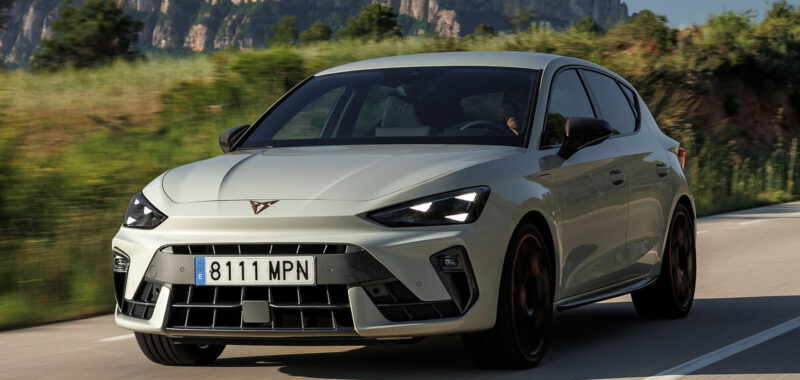The most obvious changes inside are the new 12.9in infotainment screen and enhancements to material quality; both of which, to a certain extent, work to make the Leon’s interior feel as upmarket as Cupra says it is. Elsewhere, it’s standard Leon, which in most respects, is no bad thing.
So long as you stay away from the plug-in hybrids, whose battery packs rob space, the Leon is quite a roomy hatchback, offering 380 litres of boot space, and almost as much rear leg and head room as the most spacious rivals. The boot is a slightly awkward shape, though, and could really do with a variable floor.
In the front of the Leon are two sports seats with just enough lateral support to keep you in place during hard cornering, but whose bolsters aren’t too extreme for daily use. In lower-spec cars, they are adjusted manually and lack the pull-out thigh support and cushion angle adjustment of more expensive versions, but lumbar support is standard.
Even the lower-spec models keep up a reasonably convincing air of luxury. The materials are generally a cut above those in a Volkswagen Golf both in terms of feel and attractiveness. The cloth upholstery on the optional bucket seats is now made from a 73%-recycled vegan textile, while the real leather in other areas is claimed to be “environmentally conscious”.
Special mention needs to be made of the steering wheel, which is almost round and avoids the thick rim so pervasive in modern performance cars. Instead, it’s thin and firm, upholstered in pleasingly smooth leather and with a flat edge at the front that your thumbs naturally find. We wouldn’t be surprised if one or two of Cupra’s interior designers have 1980s Porsches in their private garages. And the spokes house real buttons, rather than touch panels.
Sadly, elsewhere in the Cupra Leon’s interior hasn’t entirely eluded the VW Group’s corporate penny-pinching department. The materials at the very top of the dashboard, door cards and centre console feel cheap and hollow, and the seat fabrics feel as though they are a very thin layer of fragile material draped over foam. Couple these with the fact that many functions such as the driving mode, stability control, heated seats and HVAC controls are run through the screen.
Said screen runs Volkswagen’s new operating system, MIB4, which is slick to respond to inputs and, in our time with it, free of bugs and glitches. It also helps that the sliders for setting the temperature and radio volume are now backlit, but it would be better if controls as crucial as these are kept as physical buttons. This would certainly be preferable to a slider which you have to find and aim at, or hidden in a submenu within a submenu that becomes too distracting when driving.

